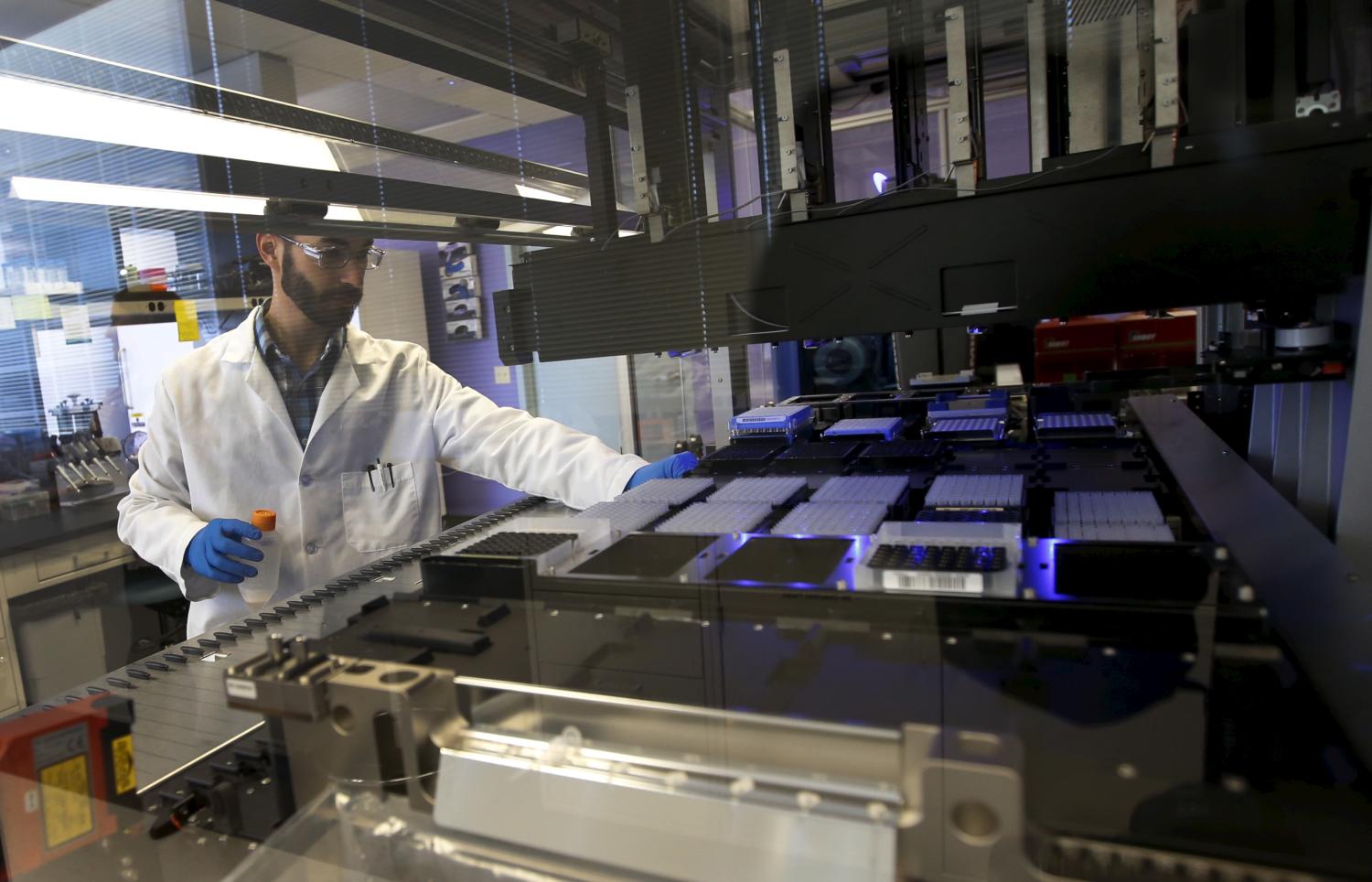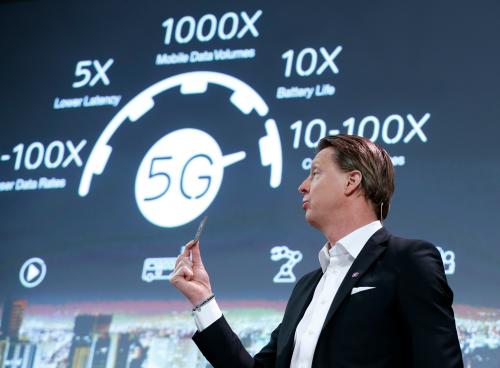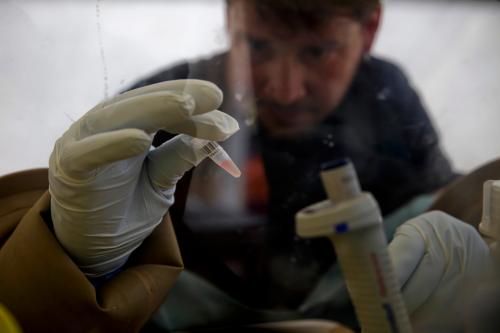By the end of the decade, the fifth-generation (5G) network is expected to support 50 billion connected devices with speeds of more than 100 megabits per second. 5G’s connectivity, computing power, and virtual system architecture will soon expand the mobile internet of things (IoT). The connection of billions of digital devices through IoT will pave the way for innovation across industries and markets; in particular, connected medicine has the potential to transform health care through imaging, diagnostics, and treatment improvements, among other groundbreaking new possibilities.
In this paper, Darrell West discusses the unique capabilities of the 5G era, explores applications of IoT technology in medicine, and recommends policies for making these new care delivery systems a reality. 5G technology has the potential to increase patient access to treatment options, reduce hospital visits, and create a flexible network of telehealth, in addition to reducing overall medical costs.
West argues that work needs to be done to facilitate an end-to-end system. Fully realizing the potential of the health IoT will require investments in digital infrastructure and changes in reimbursement policy, privacy protection, and research data. Devices must connect to networks and the cloud in ways that are interoperable and secure. That will enable health providers and patients to receive the benefits of digital innovation for wellness and health care. By overcoming these barriers, both health care consumers and providers will see substantial advances in medical treatment.










